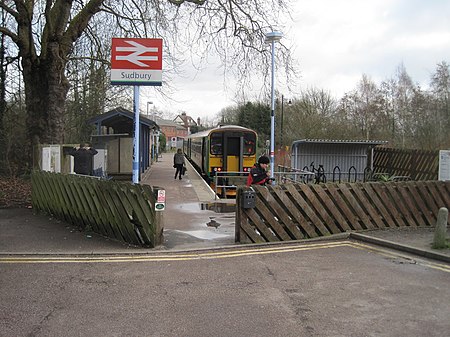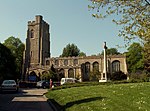Sudbury railway station

Sudbury railway station is the northern terminus of the Gainsborough Line, a branch off the Great Eastern Main Line in the East of England, serving the town of Sudbury, Suffolk. It is 11 miles 67 chains (19.05 km) down the line from the southern terminus of Marks Tey and 58 miles 32 chains (93.99 km) measured from London Liverpool Street; the preceding station on the branch is Bures. Its three-letter station code is SUY. The platform has an operational length for two-coach trains. The station is currently operated by Greater Anglia, which also operates all trains serving it, as part of the East Anglia franchise. Sudbury is an unstaffed station with one platform as the line is single-track, and with a self-service ticket machine. Volunteers from Sudbury In Bloom man the station, which is annually entered into the Anglia In Bloom station competition; it won the Silver Gilt award in 2006, 2007 and 2008. It also won the Best Station Garden at the 2008 ACoRP Community Rail Awards.
Excerpt from the Wikipedia article Sudbury railway station (License: CC BY-SA 3.0, Authors, Images).Sudbury railway station
Station Road, Babergh Sudbury
Geographical coordinates (GPS) Address Nearby Places Show on map
Geographical coordinates (GPS)
| Latitude | Longitude |
|---|---|
| N 52.036 ° | E 0.735 ° |
Address
Sudbury Station
Station Road
CO10 2RD Babergh, Sudbury
England, United Kingdom
Open on Google Maps








